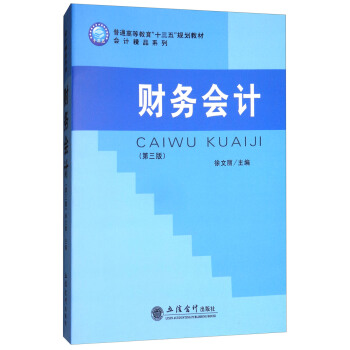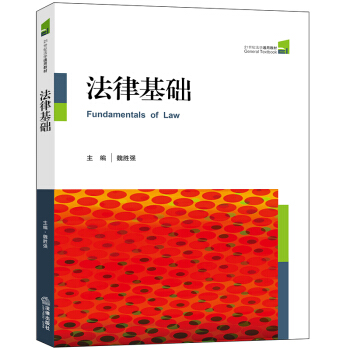

具体描述
编辑推荐
适读人群 : 高等院校理工、财经、医药、农林等专业大学本科生、研究生,从事线性代数双语或英语教学的教师,特别是准备出国留学的大学生及高中毕业生本书可以作为大学数学线性代数双语或英语教学教师和准备出国留学深造学子的参考书。特别适合中外合作办学的国际教育班的学生,能帮助他们较快地适应全英文的学习内容和教学环境,完成与国外大学学习的衔接。本书在定稿之前已在多个学校作为校本教材试用,而且得到了师生的好评。
内容简介
本书采用学生易于接受的知识结构方式和英语表述方式,科学、系统地介绍了线性代数的行列式、矩阵、高斯消元法解线性方程组、向量、方程组解的结构、特征值和特征向量、二次型等知识。强调通用性和适用性,兼顾先进性。本书起点低,难度坡度适中,语言简洁明了,不仅适用于课堂教学使用,同时也适用于自学自习。全书有关键词索引,习题按小节配置,题量适中,题型全面,书后附有答案。本书读者对象为高等院校理工、财经、医药、农林等专业大学生和教师,特别适合作为中外合作办学的国际教育班的学生以及准备出国留学深造学子的参考书。
作者简介
毛纲源,武汉理工大学资深教授,毕业于武汉大学,留校任教,后调入武汉工业大学(现合并为武汉理工大学)担任数学物理系系主任,在高校从事数学教学与科研工作40余年,除了出版多部专著(早在1998年,世界科技出版公司World Scientific Publishing Company就出版过他主编的线性代数Linear Algebra的英文教材)和发表数十篇专业论文外,还发表10余篇考研数学论文。主讲微积分、线性代数、概率论与数理统计等课程。理论功底深厚,教学经验丰富,思维独特。曾多次受邀在各地主讲考研数学,得到学员的广泛认可和一致好评:“知识渊博,讲解深入浅出,易于接受”“解题方法灵活,技巧独特,辅导针对性极强”“对考研数学的出题形式、考试重点难点了如指掌,上他的辅导班受益匪浅”。
马迎秋,北京师范大学珠海分校副教授,毕业于渤海大学,爱尔兰都柏林大学数学硕士。主讲微积分、线性代数、数学教学论、数学教学设计、数学史与数学文化等课程。在国内外权wei期刊发表中英文论文10余篇。
梁敏,北京师范大学珠海分校副教授,毕业于天津大学,美国托莱多大学数学硕士,美国罗格斯大学统计学硕士。主讲微积分、线性代数、概率论与数理统计、商务统计、运筹学等课程。在国内外权wei期刊发表中英文论文10余篇。
精彩书评
本书是线性代数教材,采用全英文编写,是作者几十年来在教学一线工作经验的总结,在编写过程中参考了国外优秀的英语线性代数教材,探讨了适应中国学生学习的一些内容和模式,符合当前大学数学线性代数课程英语教学的特点,很具有实用性和针对性。目录
Chapter 1 Determinant(1)1.1 Definition of Determinant(1)
1.1.1 Determinant arising from the solution of linear system(1)
1.1.2 The definition of determinant of order n(5)
1.1.3 Determine the sign of each term in a determinant (8)
Exercise 1.1(10)
1.2 Basic Properties of Determinant and Its Applications(12)
1.2.1 Basic properties of determinant(12)
1.2.2 Applications of basic properties of determinant(15)
Exercise 1.2(19)
1.3 Expansion of Determinant (21)
1.3.1 Expanding a determinant using one row (column)(21)
1.3.2 Expanding a determinant along k rows (columns)(27)
Exercise 1.3(29)
1.4 Cramer’s Rule(30)
Exercise 1.4(36)
Chapter 2 Matrix(38)
2.1 Matrix Operations(38)
2.1.1 The concept of matrices(38)
2.1.2 Matrix Operations(41)
Exercise 2.1(58)
2.2 Some Special Matrices(60)
Exercise 2.2(64)
2.3 Partitioned Matrices(66)
Exercise 2.3(72)
2.4 The Inverse of Matrix(73)
2.4.1 Finding the inverse of an n×n matrix(73)
2.4.2 Application to economics(81)
2.4.3 Properties of inverse matrix (83)
2.4.4 The adjoint matrix A�� (or adjA) of A(86)
2.4.5 The inverse of block matrix(89)
Exercise 2.4(91)
2.5 Elementary Operations and Elementary Matrices(94)
2.5.1 Definitions and properties (94)
2.5.2 Application of elementary operations and elementary matrices(100)
Exercise2.5(102)
2.6 Rank of Matrix(103)
2.6.1 Concept of rank of a matrix(104)
2.6.2 Find the rank of matrix(107)
Exercise 2.6(109)
Chapter 3 Solving Linear System by Gaussian Elimination Method(110)
3.1 Solving Nonhomogeneous Linear System by Gaussian Elimination Method(110)
3.2 Solving Homogeneous Linear Systems by Gaussian Elimination Method(128)
Exercise 3(131)
Chapter 4 Vectors(134)
4.1 Vectors and its Linear Operations(134)
4.1.1 Vectors(134)
4.1.2 Linear operations of vectors(136)
4.1.3 A linear combination of vectors (137)
Exercise 4.1(143)
4.2 Linear Dependence of a Set of Vectors (143)
Exercise 4.2(155)
4.3 Rank of a Set of Vectors(156)
4.3.1 A maximal independent subset of a set of vectors(156)
4.3.2 Rank of a set of vectors(159)
Exercise 4.3(163)
Chapter 5 Structure of Solutions of a System(165)
5.1 Structure of Solutions of a System of Homogeneous Linear Equations (165)
5.1.1 Properties of solutions of a system of homogeneous linear equations(165)
5.1.2 A system of fundamental solutions (166)
5.1.3 General solution of homogeneous system(171)
5.1.4 Solutions of system of equations with given solutions of the system(173)
Exercise 5.1(176)
5.2 Structure of Solutions of a System of Nonhomogeneous Linear Equations(178)
5.2.1 Properties of solutions(178)
5.2.2 General solution of nonhomogeneous equations (179)
5.2.3 The simple and convenient method of finding the system of fundamental solutions and particular solution(183)
Exercise 5.2(189)
Chapter 6 Eigenvalues and Eigenvectors of Matrices(191)
6.1 Find the Eigenvalue and Eigenvector of Matrix(191)
Exercise 6.1(197)
6.2 The Proof of Problems Related with Eigenvalues and Eigenvectors(198)
Exercise 6.2(199)
6.3 Diagonalization(200)
6.3.1 Criterion of diagonalization(200)
6.3.2 Application of diagonalization(209)
Exercise 6.3(210)
6.4 The Properties of Similar Matrices(211)
Exercise 6.4(216)
6.5 Real Symmetric Matrices(218)
6.5.1 Scalar product of two vectors and its basis properties(218)
6.5.2 Orthogonal vector set(220)
6.5.3 Orthogonal matrix and its properties(223)
6.5.4 Properties of real symmetric matrix(225)
Exercise 6.5(229)
Chapter 7 Quadratic Forms (231)
7.1 Quadratic Forms and Their Standard Forms(231)
Exercise 7.1(236)
7.2 Classification of Quadratic Forms and Positive Definite Quadratic(Positive Definite Matrix)(237)
7.2.1 Classification of Quadratic Form(237)
7.2.2 Criterion of a positive definite matrix(239)
Exercise 7.2(241)
7.3 Criterion of Congruent Matrices(242)
Exercise 7.3(245)
Answers to Exercises(246)
Appendix Index(266)
前言/序言
The authors are pleased to see the text of Linear Algebra in English version for Chinese students at the university level. This book not only shows and explains the useful and beautiful knowledge of mathematics, but also presents the structure and arrangement of linear algebra.1. The Significance of this Book
“One sows a seed in the spring, thousands of grains autumn to him brings.” All the Chinese students had strict training step by step in the study of mathematics before they become a university student. Intuitive and experimental methods are basic and important study patterns, but the target of mathematical education is to form and improve the deductive ability. So far, Chinese students have distinct and excellent achievement in international comparison of mathematics all over the world. As the improvement in educational exchange internationally, more and more Chinese students choose to study abroad at their university level or higher level. Therefore, mathematical textbook on the basis of Chinese students’ mathematical study in English version is urgent needed and essential. This book provides the strong support for the students who will study Economics, Finance, Management, Social Science and so on in local country or abroad.
2. The Difference between Linear Algebra and Calculus
Calculus is mostly about symmetric and beautiful things.One is differentiation, another is its inverse—integration. Calculus can help us to solve the problems in continuous and analog situation in our life. How about other discrete and digital things? Linear algebra can give us help, and vector and matrix are the second type of language we need to study and understand. Study to read a matrix is the most meaningful and key goal in linear algebra, and it gives wide variety for this mathematical area. There are three examples given here:Triangular Matrix,Symmetric Matrix,Orthogonal Matrix.
3. The Structure of this Book
This book organizes the content basis on the logical relationship among number, matrix and vector. It lists the structure from determinant, to matrix, to solve system of linear equations, to vector, to structure of solutions, to eigenvalue and eigenvector, to quadratic form finally.
Here is the structure of this book:
Chapter 1 starts with determinant. There are three important points about the determinant. The first is the definition, the second is property, and the last is its expansion. The Cramer’s rule is given basis on these three points.
Chapter 2 gives all the varieties of matrix. After the study of concept of matrix, it begins with algebra operations, and shows some special matrices. It is following with how to partition matrix, and how to find the inverse of matrix. After given the elementary operations and elementary matrix, this chapter is ended by rank of matrix.
Chapter 3 shows the relationship between matrix and the system of linear equations. Certainly, it is the most important that using matrix to solve the system of linear equations. Gaussian Elimination Method is the most helpful technique.
Chapter 4 begins studying vector. Definition and operation are two basic study points. Linear dependence and rank of vector are two new knowledge structures.
Chapter 5 is mainly basis on chapter 3 and chapter 4. Here is similar framework for giving the structure of solutions of homogeneous and nonhomogeneous system of linear equations. Both these two parts discuss the corresponding property firstly, and give the details of their structure respectively.
Chapter 6 is mostly in eigenvalue and eigenvector. Besides the definition of them, there are three points of matrix using both two of them which are diagonalization, similar matrix and real symmetric matrix.
Chapter 7 is quadratic form which has three points. The first point is about the definition. The first is the basic, almost, which is the principal and organization order of studying mathematical knowledge. The second is the classification of quadratic form and positive definite matrix. The last is criterion of congruent matrix.
4. Help with this Book
“Not knowing that flower close to the water earlier blow, I wonder if it’s last winter’s unmelted snow.” This textbook is emerged with the strong support from Applied Mathematical Department of BNUZ firstly, and the cooperation of senior professor and junior lecture in warm,selfless and enthusiastic environment. Certainly, it has very close relationship with the developing and open international education in BNUZ. Thank you all.
用户评价
这本书的出版,对于我这样一直苦于理解线性代数精髓的读者来说,无疑是个好消息。我一直觉得,线性代数不仅仅是一堆符号和公式,它背后蕴含着深刻的数学思想和强大的解决问题的能力。我希望这本书能够帮助我建立起对线性代数的整体认知,理解不同概念之间的内在联系,而不是零散地记忆知识点。例如,它会不会深入探讨矩阵的秩、零空间、列空间和行空间之间的关系?这些概念常常让我感到混淆。我也很期待书中对于“线性”这个概念的解释,它到底意味着什么?在什么场景下,我们说某个变换是线性的?这本书是否会提供一些跨学科的应用案例,比如在图像处理、机器学习、经济学建模等方面,让我看到线性代数在现实世界中的强大力量?这些实际的应用往往是激发学习兴趣和理解深度的最好催化剂。而且,我希望这本书的讲解风格能够兼具严谨性和趣味性,既有数学上的严密推导,又不失生动活泼的语言。
评分坦白说,我一直在寻找一本能够真正“讲明白”线性代数的教材。很多书虽然内容全面,但往往显得枯燥乏味,或者讲解过于晦涩。我希望这本书能够打破这种局面,用一种更易于理解的方式来呈现线性代数。我最看重的是书中是否能够提供足够多的不同类型的例子,并且这些例子能够覆盖从简单到复杂的各个层面。这样,我可以通过模仿和练习,逐步掌握解题的技巧。我也非常关心书中对于概念之间的联系的阐述。线性代数中的各个概念,比如向量空间、子空间、线性变换、矩阵等,它们之间是如何相互关联的?我希望这本书能够梳理清楚这些脉络,帮助我构建起一个完整的知识体系。此外,我对于书中是否包含一些“思考题”或者“讨论题”也比较感兴趣,这些问题往往能够激发我的思考,让我对知识有更深入的理解。最后,这本书的阅读体验,包括页面的设计、字体的选择、图表的清晰度等,也都是我衡量一本好书的重要标准。
评分刚拿到这本书,迫不及待翻阅起来。封面设计简约大气,书名“线性代数=Linear-Algebra”的标注清晰明了,一眼就能看出其核心内容。翻开扉页,纸张的质感很不错,印刷清晰,阅读体验应该会很好。我个人对数学一直抱有浓厚的兴趣,尤其是在工程和计算机科学领域,线性代数的地位举足轻重。这本书的结构安排,从目录来看,似乎循序渐进,从基础的概念如向量、矩阵,到更深层次的线性变换、特征值和特征向量,再到一些应用,都涵盖其中。我特别期待它在抽象代数和几何解释方面的阐述,希望能通过这本书更深入地理解那些抽象的概念,并将理论与实际应用联系起来。例如,它会不会详细讲解如何利用高斯消元法求解线性方程组,或者如何通过矩阵分解来分析数据?这些都是我非常关注的细节。而且,这本书的定价也比较适中,对于学生和自学者来说,是一个不错的选择。希望阅读过程中能发现更多惊喜,解决我之前学习中遇到的一些困惑,从而真正掌握这门重要的数学工具。
评分说实话,当初选择这本书,很大程度上是被它“=Linear-Algebra”的副标题吸引了。我一直认为,数学的学习,尤其是像线性代数这样高度抽象的学科,如果能用清晰、直观的语言去解释,效果会事半功倍。很多时候,一本好的教材不仅仅是知识的堆砌,更是作者思维方式和教学理念的体现。我希望这本书能够提供一些不同于我以往接触到的线性代数教材的视角,或许是从更现代的计算角度,或许是从更深刻的几何直觉出发。书中是否有大量的例子和习题来巩固所学知识?这一点对我来说至关重要。我喜欢那种能够让我动手实践,通过解题来加深理解的学习方式。尤其是对于一些比较棘手的概念,例如张量(虽然线性代数不一定深入到张量,但类比的复杂性)或者更复杂的向量空间,我希望作者能给出一些巧妙的引导,帮助我跨越理解的障碍。另外,我个人对书中的排版和图示也有一定的要求,希望它能清晰地展示数学公式和图形,避免阅读上的疲劳。
评分我一直对线性代数在理论物理和高等数学中的应用非常感兴趣,所以当看到这本书时,我抱有很高的期望。我希望这本书不仅能讲解基础知识,还能为我进一步探索更高级的数学领域打下坚实的基础。例如,它是否会触及到李群、微分流形等更抽象的概念,或者至少为理解它们提供一些必要的铺垫?我特别想知道书中对“线性无关”、“基”、“维度”等概念的阐述是否足够清晰和透彻。我曾经在学习过程中,对这些基本概念的理解不够到位,导致后续的学习遇到了不少困难。因此,我非常期待这本书能够提供一些非常巧妙的解释和例证,让我能够真正理解这些核心概念的本质。此外,我关注的另一个重要方面是证明的严谨性。虽然我不是数学专业出身,但我依然希望作者在给出定理和结论时,能够提供清晰、逻辑严密的证明过程,让我能够跟随推理,最终理解结论的由来。
相关图书
本站所有内容均为互联网搜索引擎提供的公开搜索信息,本站不存储任何数据与内容,任何内容与数据均与本站无关,如有需要请联系相关搜索引擎包括但不限于百度,google,bing,sogou 等,本站所有链接都为正版商品购买链接。
© 2025 windowsfront.com All Rights Reserved. 静流书站 版权所有



![果蔬采后生理生化实验指导/高等学校专业教材 [Experiment Guidance of Postharvest Physiology and Biochemistry of Fruits and Vegetables] pdf epub mobi 电子书 下载](https://pic.windowsfront.com/12259586/5a2500c3Ndb5fc5f1.jpg)




![珠宝首饰绘画表现技法/新视域·中国高等院校珠宝首饰设计专业“十三五”重点规划教材 [Jewelry Series Design & Making] pdf epub mobi 电子书 下载](https://pic.windowsfront.com/12313368/5a9e704cNb5d60584.jpg)






![自然保护地旅游特许经营管理指南 [Tourism Concessions in Protected Natural Areas Guidelines for Managers] pdf epub mobi 电子书 下载](https://pic.windowsfront.com/12327947/5adef498Nc7bb2ab0.jpg)




